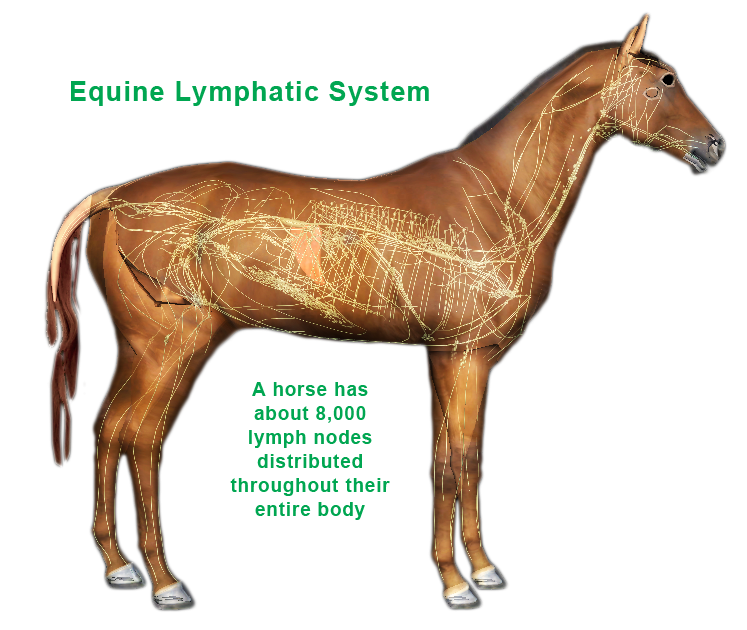What is equine lymphatic drainage? Equine lymphatic drainage is a manual therapy technique that aims to stimulate the lymphatic system in horses. The lymphatic system plays a vital role in maintaining the body’s immune function and removing waste products and toxins. Lymphatic drainage techniques help to facilitate the flow of lymphatic fluid, aiding in the removal of metabolic waste and promoting overall health.
Why use equine lymphatic drainage? Equine lymphatic drainage can offer several benefits to horses. It helps to improve lymphatic circulation, reduce swelling and inflammation, enhance immune function, and promote overall well-being. It is often used as part of a comprehensive therapeutic approach for various conditions, including edema, post-injury recovery, and as a general wellness treatment.
When to use equine lymphatic drainage? Equine lymphatic drainage techniques can be used in different scenarios, including:
- Post-injury or surgery: After an injury or surgical procedure, lymphatic drainage techniques can assist in reducing swelling, promoting healing, and aiding in the removal of waste products from the affected area.
- Edema management: If a horse has edema (swelling), lymphatic drainage techniques can help reduce the accumulation of fluid and encourage proper fluid balance.
- General wellness: Equine lymphatic drainage can be incorporated into a horse’s routine care to support overall health, enhance immune function, and promote detoxification.
How to perform equine lymphatic drainage? The specific techniques may vary, but they generally involve gentle, rhythmic movements that follow the direction of lymphatic flow.
Some common techniques used in equine lymphatic drainage include:
- Manual lymphatic drainage: This technique involves gentle, rhythmic strokes and light pressure to stimulate the lymphatic vessels and encourage fluid flow.
- Pumping movements: These movements are used to clear the lymphatic vessels and stimulate the lymphatic system. They typically involve rhythmic compressions and releases in specific areas.
- Stretching and range of motion exercises: These techniques can be used in conjunction with lymphatic drainage to improve overall circulation and mobility.
Effects of equine lymphatic drainage: Equine lymphatic drainage techniques can have several positive effects, including:
- Improved lymphatic circulation: The techniques help to stimulate lymphatic flow, aiding in the removal of waste products and toxins from the body.
- Reduction of swelling and edema: By promoting fluid movement and drainage, lymphatic drainage techniques can help reduce swelling and edema in horses.
- Enhanced immune function: Lymphatic drainage supports the immune system by removing pathogens, toxins, and cellular waste, thereby promoting a healthier immune response.
Contraindications and precautions: While equine lymphatic drainage can be beneficial, there are a few considerations to keep in mind:
- Equine lymphatic drainage should be performed by individuals who are trained and experienced in the technique to ensure its safe and effective application.
- Infection or acute inflammation: Avoid performing lymphatic drainage on areas with active infections or acute inflammation, as it may worsen the condition or spread the infection.
- Open wounds or skin conditions: Be cautious when working around open wounds or severe skin conditions. It’s best to consult with a veterinarian before performing lymphatic drainage in these cases.
- Individual sensitivities: Horses may have individual sensitivities or reactions to the techniques or products used during lymphatic drainage. It’s important to monitor the horse’s response and discontinue if any adverse reactions occur.





